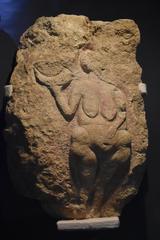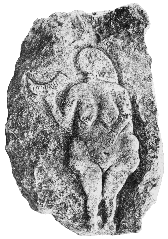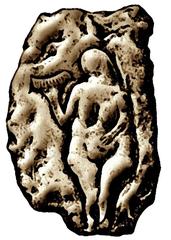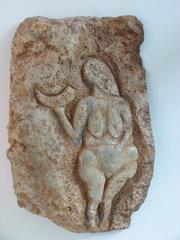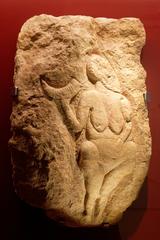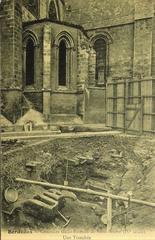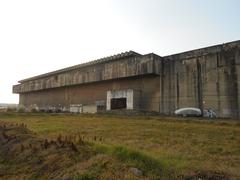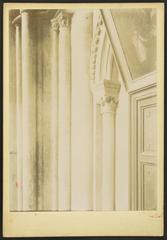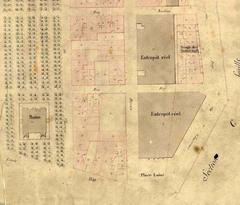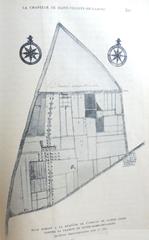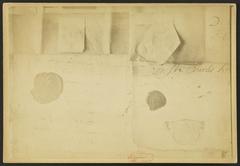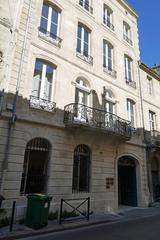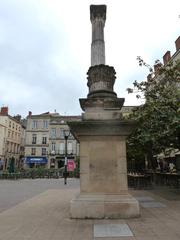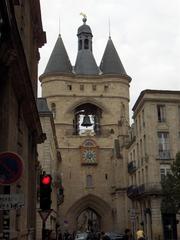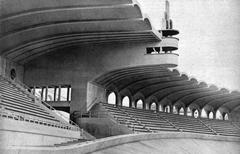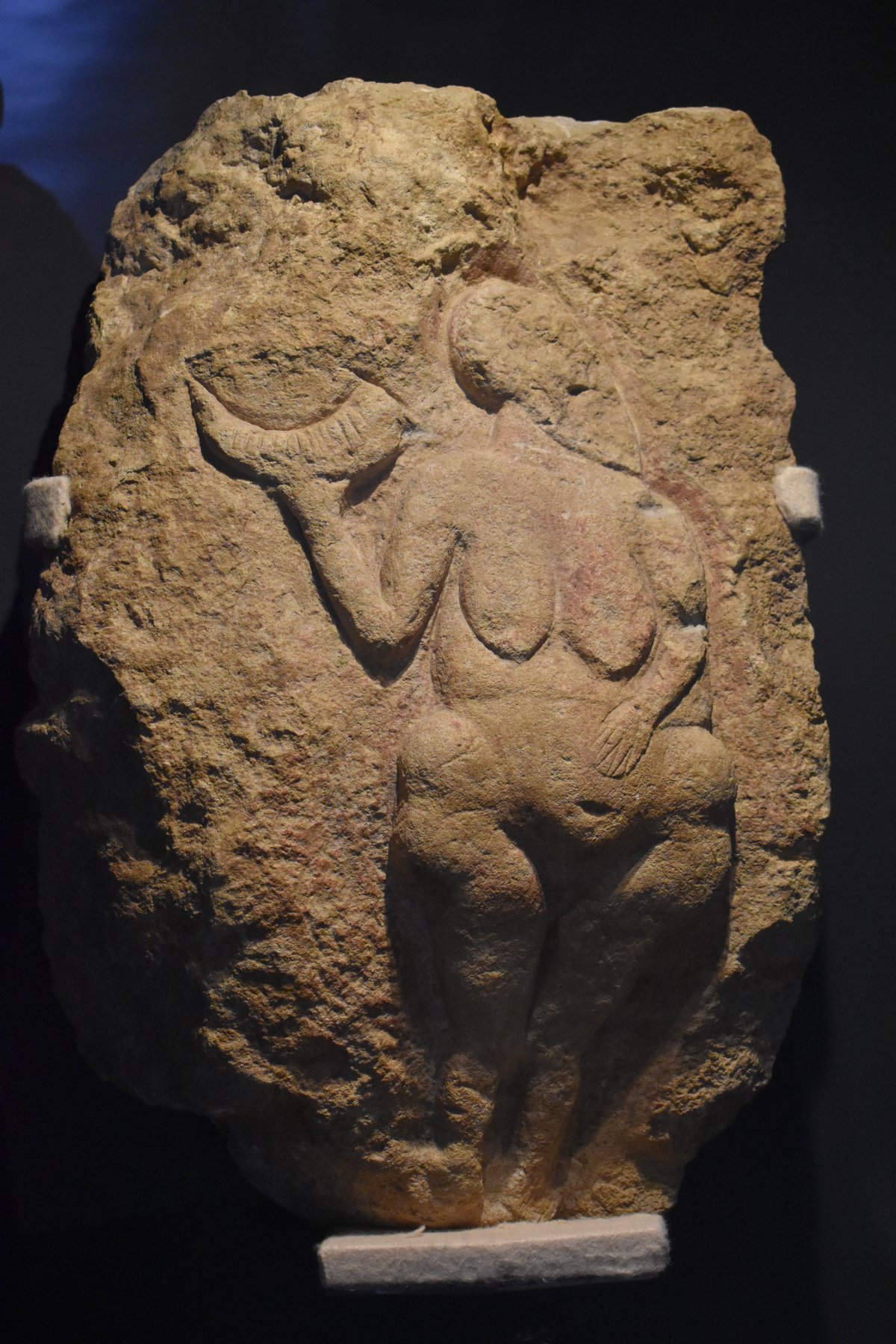
Venus of Laussel: Visiting Hours, Tickets, and Bordeaux Historical Sites Guide
Date: 14/06/2025
Introduction: The Venus of Laussel and Its Significance in Bordeaux
Nestled in southwestern France, the Venus of Laussel stands as a captivating testament to prehistoric artistry and human cultural expression. Dating from the Gravettian period of the Upper Paleolithic (approximately 22,000 to 27,000 years ago), this limestone bas-relief is among the earliest known examples of large-scale prehistoric sculpture. Discovered in 1911 at the Abri de Laussel rock shelter near Marquay in Dordogne, the Venus depicts a nude female figure with exaggerated fertility features and a bison horn incised with thirteen notches—widely interpreted as reflecting lunar or menstrual cycles (hominides.com; worldhistory.org). Such symbolism connects the artwork to ancient concepts of fertility, nature, and ritual practice.
Today, the original Venus of Laussel is housed in the Musée d’Aquitaine in Bordeaux, providing visitors with an exceptional opportunity to engage with this prehistoric masterpiece. The museum’s central Bordeaux location, accessibility, and extensive exhibits on regional prehistory make it a must-see for archaeology enthusiasts, art lovers, and travelers intrigued by humanity’s ancient past (Musée d’Aquitaine).
The surrounding Dordogne area, often called the “cradle of prehistoric art,” features renowned sites such as Lascaux, Cap Blanc, and Abri du Poisson. Together, these locations immerse visitors in the Upper Paleolithic world, revealing the sophistication and spirituality of early Homo sapiens (visual-arts-cork.com).
This guide provides detailed insights into the Venus of Laussel’s historical and artistic significance, practical visitor information, and travel tips for making the most of your trip to Bordeaux and the wider Dordogne region.
Table of Contents
- Historical Background
- Visitor Information
- Nearby Attractions and Travel Tips
- Visual Resources and Media
- Frequently Asked Questions (FAQ)
- Summary and Recommendations
- Sources
Historical Background
Discovery and Archaeological Context
The Venus of Laussel, also known as “La Femme à la Corne,” was discovered in 1911 during excavations by Dr. Jean-Gaston Lalanne at the Abri de Laussel, a rock shelter in Marquay, Dordogne (hominides.com; donsmaps.com). This shelter, located under a rocky overhang in the Beune valley near the famous Les Eyzies area, produced several carved limestone blocks—including the Venus, other female figures, and a male figure dubbed “the hunter.” Due to early excavation methods, the blocks’ exact original placements in the shelter remain uncertain.
Chronological Placement and Cultural Attribution
The Venus of Laussel is attributed to the Gravettian culture of the Upper Paleolithic, dating between 22,000 and 27,000 years ago (hominides.com; Wikipedia). Its stratigraphic context and style link it to other Gravettian artworks, such as the Venus of Willendorf and Venus of Dolní Věstonice, establishing Dordogne as a central region for studying Paleolithic art (visual-arts-cork.com).
Artistic Description and Material Characteristics
The Venus of Laussel is a limestone bas-relief approximately 46–54 centimeters tall. The figure is depicted nude, with pronounced breasts, a rounded abdomen, and broad hips—characteristics typical of Upper Paleolithic “Venus” figures. The faceless head is turned left, and the right hand holds a bison horn or cornucopia incised with thirteen notches. The left hand rests on the belly, emphasizing fertility (Wikipedia; worldhistory.org). The relief was originally painted with red ochre pigment, traces of which survive today.
Interpretive Hypotheses and Symbolic Significance
Scholars generally agree that the Venus of Laussel is a fertility symbol or goddess, like other Venus figurines. The thirteen notches on the horn are interpreted as lunar months or menstrual cycles, strengthening its connection to fertility, timekeeping, and nature’s rhythms (worldhistory.org). Some researchers have speculated that it may have had ritual or ceremonial importance, possibly as an object of veneration or in fertility rites (archeology.dalatcamping.net).
The Laussel Site and Dordogne’s Paleolithic Art
Abri de Laussel is among a constellation of Upper Paleolithic sites in Dordogne, including Lascaux (famed for its cave paintings), Cap Blanc (with its sculpted frieze), and Abri du Poisson (noted for its salmon bas-relief) (visual-arts-cork.com). Unlike most small, portable Venus figurines, the monumental Venus of Laussel was carved into a fixed rock wall, suggesting communal or ritual significance (donsmaps.com).
Visitor Information
Visiting Hours and Tickets
The Venus of Laussel is exhibited at the Musée d’Aquitaine in Bordeaux:
- Opening Hours: Tuesday to Sunday, 11:00 AM – 6:00 PM; closed Mondays and certain holidays. Check the official website for current details.
- Admission: Standard adult tickets are typically €6–€8, with discounted rates for students, seniors, and groups. Free entry for children under 18 and often on the first Sunday of each month (except July and August).
- Guided Tours: The museum offers guided tours, sometimes in English, focusing on the prehistoric collection. Advance booking is recommended.
Accessibility
The museum is wheelchair accessible, with elevators and accessible restrooms. Staff can assist visitors with special needs.
Directions
- Address: 20 Cours Pasteur, 33000 Bordeaux, France
- Getting There: The museum is in central Bordeaux, accessible via tram (Line B, stop “Musée d’Aquitaine”) and several bus lines. Public parking is available nearby, though limited (France.fr).
Note: The original Abri de Laussel site is not open to the public; all artifacts are now preserved in the museum (hominides.com).
Nearby Attractions and Travel Tips
Enhance your visit with these additional highlights:
- Lascaux Caves: Near Montignac, world-renowned for Paleolithic cave paintings.
- Cap Blanc: Features a sculpted frieze of horses and bison.
- Abri du Poisson: Noted for its fish bas-relief.
- Les Eyzies: Known as the “Capital of Prehistory,” with several museums and archaeological sites.
Travel Tips:
- Wear comfortable shoes and dress for the season.
- Book tickets for popular caves and museums in advance.
- Use the Bordeaux CityPass for access to museums, public transport, and guided tours (France.fr).
Visual Resources and Media
 Alt text: Venus of Laussel limestone bas-relief sculpture displayed at Musée d’Aquitaine.
Alt text: Venus of Laussel limestone bas-relief sculpture displayed at Musée d’Aquitaine.
Interactive Virtual Tour of Musée d’Aquitaine
Map of Dordogne’s Key Prehistoric Sites:
Google Maps link highlighting Dordogne prehistoric sites
Frequently Asked Questions (FAQ)
Q: What are the Venus of Laussel’s visiting hours?
A: The Musée d’Aquitaine is open Tuesday to Sunday, 11:00 AM to 6:00 PM. Always check the museum website for updates.
Q: How can I get tickets to see the Venus of Laussel?
A: Tickets can be purchased online or at the museum entrance. Discounts apply for students, seniors, and children.
Q: Can I visit the original Abri de Laussel site?
A: No, the original site is closed to the public for preservation. The Venus relief is displayed at the museum.
Q: Are guided tours available?
A: Yes, guided tours are offered—check schedules and book in advance.
Q: Is the museum accessible for people with disabilities?
A: Yes, the museum is fully wheelchair accessible and offers amenities for visitors with special needs.
Q: Is photography allowed?
A: Non-flash photography is generally permitted, but check with museum staff for restrictions.
Summary of Key Points and Visitor Recommendations
The Venus of Laussel is a monumental example of prehistoric human creativity and symbolic thought. Its bas-relief form and fertility symbolism provide crucial insight into the spiritual and social lives of Gravettian communities over 20,000 years ago. While the original shelter is inaccessible, the Musée d’Aquitaine in Bordeaux offers a thoughtfully curated venue to experience the Venus alongside other archaeological treasures (hominides.com; Musée d’Aquitaine).
For a richer understanding, explore the broader Dordogne region, visiting sites like Lascaux and Cap Blanc. Use practical information on museum hours, tickets, and accessibility to plan your visit. Guided tours and the Audiala app can further enhance your experience.
Begin your journey today to connect with humanity’s distant past through the timeless Venus of Laussel—a prehistoric treasure that continues to inspire and enlighten visitors from around the world.
Sources
- Venus of Laussel: Visiting Hours, Tickets, and History of Dordogne’s Prehistoric Treasure, Hominides
- Venus of Laussel, Wikipedia
- The Venus of Laussel, World History Encyclopedia
- Venus of Laussel, Musée d’Aquitaine Official Website
- Prehistoric Art in Dordogne, Visual Arts Cork
- Visiting the Venus of Laussel, Prehistoric Tourist
- French Flair: Culture and Heritage in Bordeaux, France.fr
